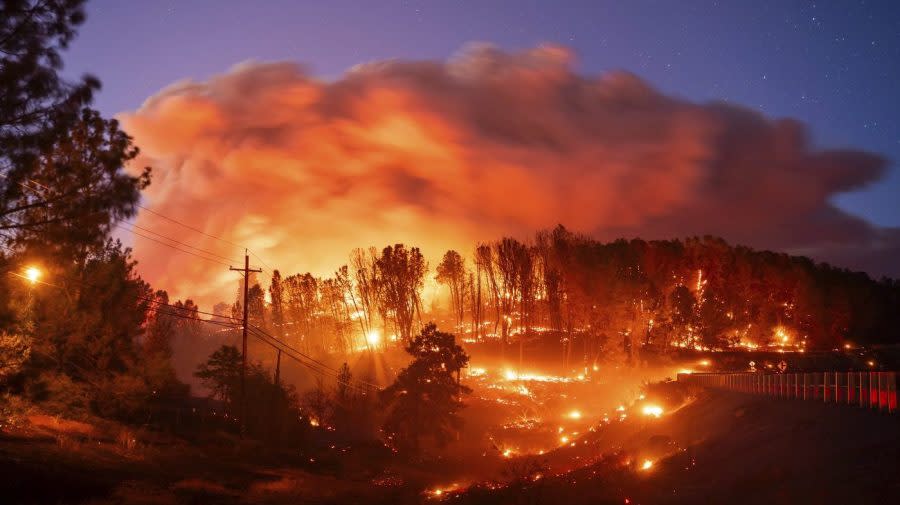‘Extreme’ California blaze could mark dangerous turning point for wildfire season

A massive wildfire is engulfing Northern California in flames — ravaging structures and forcing the evacuation of thousands of residents from their homes.
The Park Fire, California’s largest blaze this season thus far, was ripping through Butte and Tehama counties and was only 3 percent contained as of Friday morning, according to Cal Fire. The blaze had ballooned to 164,286 acres by this point — growing more than threefold in just 24 hours.
For Daniel Swain, a climate scientist at the University of California, Los Angeles, the Park Fire may mark a dangerous turning point for this year’s wildfire season.
“The 2010s were a decade of incredible occurrences from a California wildfire perspective, but so far this year, we haven’t seen anything that looked quite like that,” Swain said at a Thursday afternoon webinar. “I think we are now, with this new fire burning.”
Local law enforcement believe the blaze began after Ronnie Sout, a 42-year-old resident of Chico, Calif., was seen pushing a car that was ablaze into a nearby gully.
“The car went down an embankment approximately 60 feet and burned completely, spreading flames that caused the Park Fire,” the Butte County district attorney’s office said in a statement.
The suspect was identified and booked into the Butte County Jail, where he is being held without bail until his arraignment next week.
“The Park Fire continues to burn very actively, especially when aligned with slope and winds, resulting in spotting and quick fire movement,” Cal Fire reported Friday morning.
As the blaze burned, the National Weather Service’s Sacramento branch issued a red flag warning with “gusty southerly winds and low relative humidity” persisting across the region.
Swain offered similar observations, while stressing the “incredible” nature of this fire, which he said had “advanced in the initial hours at about 2 to 3 miles per hour.”
“This is this is a fire that essentially advanced continuously at or above walking speed without slowing down at all in the overnight hours,” he added.
The only aspect of the incident that Swain identified as “good news” was the fact that the fire had already burned through populated areas and was moving toward more remote regions.
“All the other news is pretty bad,” he continued, emphasizing how “aggressively” the blaze has been behaving. “It’s exhibiting extreme and exotic fire behavior, very rapid rates of spread.”
Exacerbating that spread has been moderate winds, as well as record-dry vegetation that Swain attributed to the “record heatwave” that California and much of the U.S. West has been enduring.
“This thing is going full steam ahead. It’s still moving as fast as it ever was,” he said. “This is a fire that is likely going to become several times larger than it currently is.”
As the Park Fire gained traction in California, another set of blazes had already wrought serious destruction in Western Canada — destroying large parts of the town of Jasper in the past few days.
Blown in by strong winds ahead of a cold front, that forest fire was able “to rapidly advance on the town itself,” Swain explained, describing the event as “another major wildland-urban-interface fire catastrophe.”
“This is really a western North America problem right now, not just an American or Canadian issue,” Swain said of the multitude of fires and record-breaking temperatures scorching the region.
“Conditions have become dicier and dicier over the past few weeks,” he added.
Copyright 2024 Nexstar Media, Inc. All rights reserved. This material may not be published, broadcast, rewritten, or redistributed.
For the latest news, weather, sports, and streaming video, head to The Hill.

